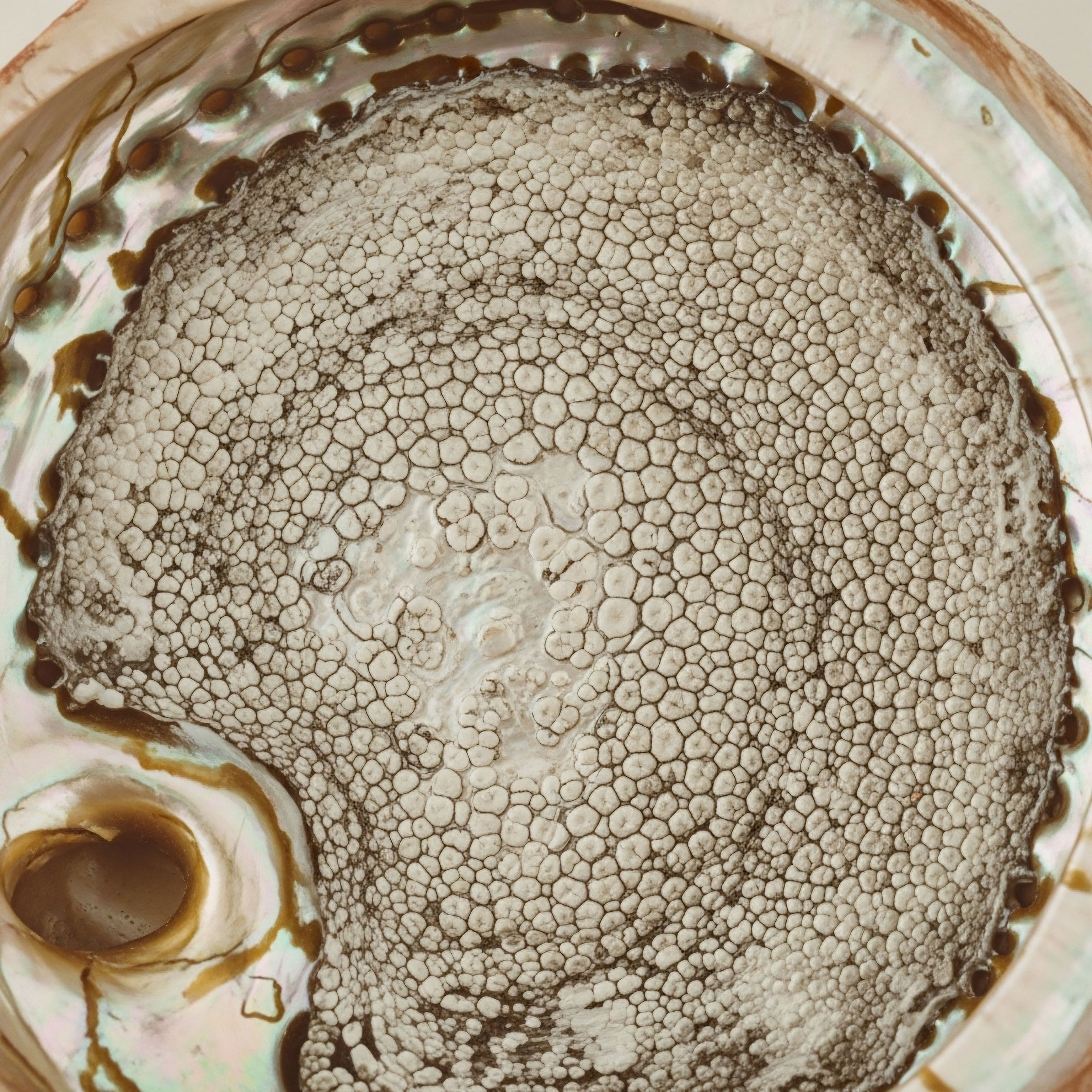

The Signal Decay in Modern Man
The human body is a system of signals. Hormones are the master regulators, the chemical messengers that dictate cellular function, cognitive tempo, and physical output. In youth, this signaling is robust, a clear and powerful broadcast that commands growth, repair, and vitality. With time, this broadcast weakens. The signal corrupts, filled with static and interference. This is the process of aging, a slow erosion of physiological command.
Enduring physiological dominance is the reversal of this decay. It is the deliberate act of restoring the integrity of these foundational signals. The objective is to move beyond the passive acceptance of age-related decline and into a state of proactive biological stewardship.
The gradual decline in cognitive sharpness, the accumulation of visceral fat, the loss of metabolic flexibility, and the evaporation of physical drive are data points. They indicate a failure in the underlying hormonal software that governs the system.

The Cognitive Downgrade
The brain is exquisitely sensitive to hormonal input. Testosterone, for instance, is a powerful neuromodulator, directly influencing neuronal health and synaptic plasticity. Its decline is linked to a measurable decrease in cognitive performance, from memory recall to executive function. Studies confirm that men with higher levels of bioavailable testosterone exhibit superior performance on cognitive tests. This is a critical point of intervention. The “brain fog” associated with aging is a symptom of a tangible, correctable signaling deficit.
A randomized trial in older men with low testosterone demonstrated that TRT significantly improved global cognition, memory, and attention beyond the effects of lifestyle changes alone.

Metabolic Integrity Failure
The body’s ability to partition fuel ∞ to burn fat, utilize glucose, and build lean tissue ∞ is governed by the endocrine system. As key hormones like testosterone and growth hormone decline, the system defaults to a state of preferential fat storage and muscle catabolism. Insulin sensitivity wanes, visceral adipose tissue accumulates, and the metabolic engine sputters.
This is the silent engine seizure that precedes a cascade of chronic diseases. Recalibration addresses this at the source, adjusting the master signals to restore metabolic efficiency and optimal body composition.


Protocols for System Reacquisition
Reclaiming physiological control requires precise, targeted inputs. The tools of recalibration are molecules that either replace or amplify the body’s own endogenous signals. This is an engineering problem, requiring the right tool for the right system at the right dosage. The primary axes of intervention are the Hypothalamic-Pituitary-Gonadal (HPG) axis and the Growth Hormone (GH) axis.

Recalibrating the HPG Axis
The HPG axis governs testosterone production. When this system falters, direct intervention becomes necessary. The gold standard is Testosterone Replacement Therapy (TRT), which restores serum testosterone to the optimal physiological range of a young, healthy male. This directly impacts everything from mood and cognitive function to muscle protein synthesis and bone density.

Key TRT Considerations
- Delivery Systems: Injections (cypionate, enanthate) offer stable, predictable pharmacokinetics. Transdermal gels and creams provide daily application but can have variable absorption.
- Ancillary Therapies: Managing downstream metabolites like estrogen is critical for balancing the system. Aromatase inhibitors (AIs) may be used judiciously to control the conversion of testosterone to estradiol.
- System Monitoring: Regular blood analysis is non-negotiable. Key markers include Total and Free Testosterone, Estradiol (E2), SHBG, PSA, and a complete blood count to monitor hematocrit.

Amplifying the GH Axis with Peptides
Peptides are short-chain amino acids that act as highly specific signaling molecules. Unlike direct GH administration, certain peptides stimulate the pituitary’s own production of growth hormone, preserving the natural pulsatile release. This is a more nuanced approach to restoring youthful GH levels.
This approach uses a synergistic combination of a Growth Hormone Releasing Hormone (GHRH) and a Growth Hormone Releasing Peptide (GHRP).
| Peptide Class | Example | Mechanism of Action | Primary Outcome |
|---|---|---|---|
| GHRH Analogue | CJC-1295 (without DAC) | Binds to GHRH receptors in the pituitary, signaling for GH release. | Increases the amplitude of natural GH pulses. |
| GHRP / Ghrelin Mimetic | Ipamorelin | Binds to the GHSR receptor, amplifying the GH pulse and inhibiting somatostatin. | Enhances pulse frequency and supports GHRH signal. |


The Metrics of Intervention
The decision to recalibrate is driven by data, both subjective and objective. It is a response to a clear deviation from optimal performance parameters. Age is a correlative factor, but the true triggers are specific biomarkers and functional deficits. The intervention begins when the evidence of system decline becomes undeniable.

Diagnostic Triggers
A comprehensive diagnostic panel is the starting point. This provides the quantitative evidence needed to justify and design a protocol. The goal is to identify the specific points of failure within the endocrine feedback loops.
- Hormonal Panel: This goes beyond a simple total testosterone test. A full assessment includes Total and Free Testosterone, LH, FSH, Estradiol (sensitive assay), DHEA-S, and SHBG. This maps the entire HPG axis.
- Metabolic Markers: Fasting Insulin, HbA1c, and a full lipid panel reveal the state of metabolic health and insulin sensitivity.
- Inflammatory Markers: High-sensitivity C-reactive protein (hs-CRP) provides a measure of systemic inflammation, a key driver of aging and hormonal resistance.

Functional Decline as a Signal
Biomarkers tell one part of the story; lived experience tells the other. The “when” is also dictated by a persistent decline in key performance indicators that fails to respond to adjustments in training, nutrition, and sleep.

Performance Thresholds
- Cognitive: A noticeable decline in verbal fluency, memory, or focus that impacts professional performance.
- Physical: An inability to recover from training, a persistent loss of strength despite consistent effort, or a steady, unfavorable shift in body composition.
- Psychological: A sustained drop in drive, motivation, mood stability, and resilience to stress.
When both the quantitative data from bloodwork and the qualitative data from daily performance align to show a clear downward trajectory, that is the precise moment for calculated intervention.

The Deliberate Organism
The human machine was designed for a world that no longer exists. Its default settings lead to a predictable decline in the modern environment. To achieve enduring physiological dominance is to reject these defaults. It is the assertion of conscious will over biological programming.
Through precise measurement and targeted intervention, we impose a new set of instructions on the system. This is the ultimate expression of agency ∞ the transition from a passive passenger in our own biology to the pilot in command.



